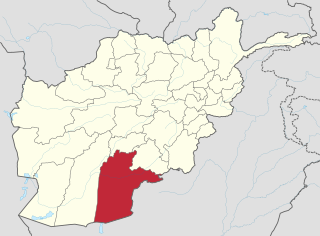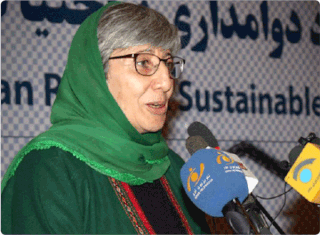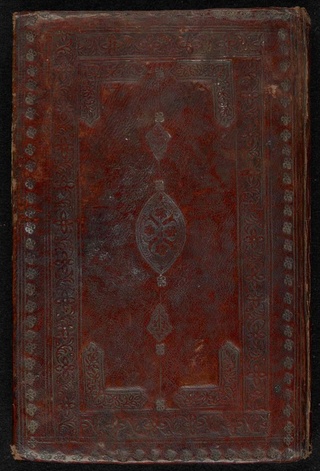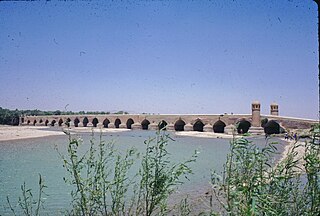Related Research Articles

Kandahār is one of the thirty-four provinces of Afghanistan, located in the southern part of the country, sharing a border with Pakistan, to the south. It is surrounded by Helmand in the west, Uruzgan in the north and Zabul Province in the east. Its capital is the city of Kandahar, Afghanistan's second largest city, which is located on the Arghandab River. The greater region surrounding the province is called Loy Kandahar. The Emir of Afghanistan sends orders to Kabul from Kandahar making it the de facto capital of Afghanistan, although the main government body operates in Kabul. All meetings with the Emir take place in Kandahar, meetings excluding the Emir are in Kabul.
Kabul University is one of the major and oldest institutions of higher education in Afghanistan. It is in the 3rd District of the capital Kabul, near the Ministry of Higher Education. It was founded in 1931 by King Mohammed Nadir Shah, whose prime minister at the time was his younger brother, Sardar Mohammad Hashim Khan.

Maymana is the capital city of Faryab Province in northwestern Afghanistan, near the Turkmenistan border. It is approximately 400 km (250 mi) northwest of the country's capital Kabul, and is located on the Maymana River, which is a tributary of the Murghab River. The population of Maymana was 149,040 in 2015, making it one of the largest cities of northwestern Afghanistan.

The National Museum of Afghanistan, also known as the Kabul Museum, is a two-story building located 9 km southwest of the center of Kabul in Afghanistan. As of 2014, the museum is under major expansion according to international standards, with a larger size adjoining garden for visitors to relax and walk around. The museum was once considered to be one of the world's finest.

Baghlan is a city in northern Afghanistan, in the eponymous province, Baghlan Province. It is located three miles east of the Kunduz River, 35 miles south of Khanabad, and about 500 metres above sea level in the northern Hindu Kush. Baghlan's capital, Pul-e-Khumri, is known to be an economic hub connected to eight other provinces by the Kabul-North highway.

Sima Samar is an Afghan woman and human rights advocate, activist and social worker within national and international forums, who served as Minister of Women's Affairs of Afghanistan from December 2001 to 2003. She is the former Chairperson of the Afghan Independent Human Rights Commission (AIHRC) and, from 2005 to 2009, United Nations Special Rapporteur on the situation of human rights in Sudan. In 2011, she was part of the newly founded Truth and Justice party. In 2012, she was awarded the Right Livelihood Award for "her longstanding and courageous dedication to human rights, especially the rights of women, in one of the most complex and dangerous regions in the world."
Roqia Abubakr was an Afghan politician, and jointly the first woman elected to parliament in the country.

Nancy Hatch Dupree was an American-Afghan historian whose work primarily focused on the history of modern Afghanistan. She was the director of the Afghanistan Center at Kabul University and author of five books that she compiled while studying the history of Afghanistan from 1962 until the late 1970s, writing about tourism and history of Bamyan, Kabul, Kandahar, Herat, Mazar-i-Sharif and so on. She was fondly called the "grandmother of Afghanistan", having spent more of her life there or with Afghans abroad.
Louis Dupree was an American archaeologist, anthropologist, and scholar of Afghan culture and history. He was the husband of Nancy Hatch Dupree, who was the Board Director of the Afghanistan Center at Kabul University in Afghanistan and author of five books about Afghanistan. The husband and wife team from the United States worked together for 15 years in Kabul, collecting as many works written about Afghanistan as they could. They travelled across the country from 1962 until the 1979 Soviet intervention, conducting archaeological excavations.

The Lataband Pass or Kotal-e Latah Band, in pashto کوتل لته بند, is a mountain pass connecting Kabul and Jalalabad on the way to Pakistan in the Karkacha hills between Seh Baba and Butkhak in the Hindukush Range. The name, Lataband, means 'Mountain of Rags' as there was an old belief that people who hung bits of clothing on the bushes along the way, had their wishes granted.

Ayesha Durrani, also known as Aisha-i-Durani and Aisha Durrani (18th-century) was an Afghan poet, one of the wives of Timur Shah Durrani of the Durrani Empire. A number of her poems were compiled into a manuscript in 1882, and Durrani is credited with founding the first school for girls in Afghanistan.

Princess India of Afghanistan is the youngest daughter of Amanullah Khan and Soraya Tarzi, who were respectively King and Queen of Afghanistan in the 1920s. She holds the title of princess of the royal house of Mohammadzai-Tarzi.
Shafiqa Ziaie or Shafiqa Ziaye was an Afghan educator and cabinet minister. She belonged to the generation of pioneer women who attained public positions in Afghan society after the reforms of Mohammed Daoud Khan.
Alia Hafeez was an Afghan educator. She belonged to the generation of pioneer women who attained public positions in Afghan society after the reforms of Mohammed Daoud Khan.
Halima Rafat was an Afghan nurse and women's rights activist. She was one of the first two nurses of her country, and belonged to the pioneer generation of professional women in Afghanistan.
Mirmon Halima also known as Babo Jan or Bobo Jan, was an Afghan royal consort. She was married to Abdur Rahman Khan.

Malan Bridge, also called Pul-i-Malan, is a two-lane arched bridge over the Hari River, connecting Injil District with Guzara District, both in Afghanistan. It was built around 1110 AD. The bridge is located 12 km (7.5 mi) south of Herat's old city and downstream or west from Pul-i Pushtu. It is currently made up of 22 arches and has survived several floods that have washed away other bridges crossing the Hari. It is 230 m (750 ft) long, 8 m (26 ft) wide, and 10 m (33 ft) high.
Said Qala Tepe is an archaeological site near Kandahar in Afghanistan. The tell is about 8 meters high and 200 by 200 meters in area. It has produced particularly strong evidence for the prehistoric period, showing an intensive settlement of the site in the fourth and third millennium BC, attributed to the Helmand culture.
References
- ↑ Afghanistan center news / Louis and Nancy Hatch Dupree Foundation for the Afghanistan Center at Kabul University (ACKU). University of Arizona Libraries. 2009. doi:10.2458/azu_acku_serial_z845_a34_l68_v2_n1.
- M. Saed: Women in Afghanistan history
- Rahimi Fahima. ( 1977, with 1~ update of 1985 by Nancy Hatch Dupree), Women in Afghanistan /Frauen in Afghanistan, Kabul